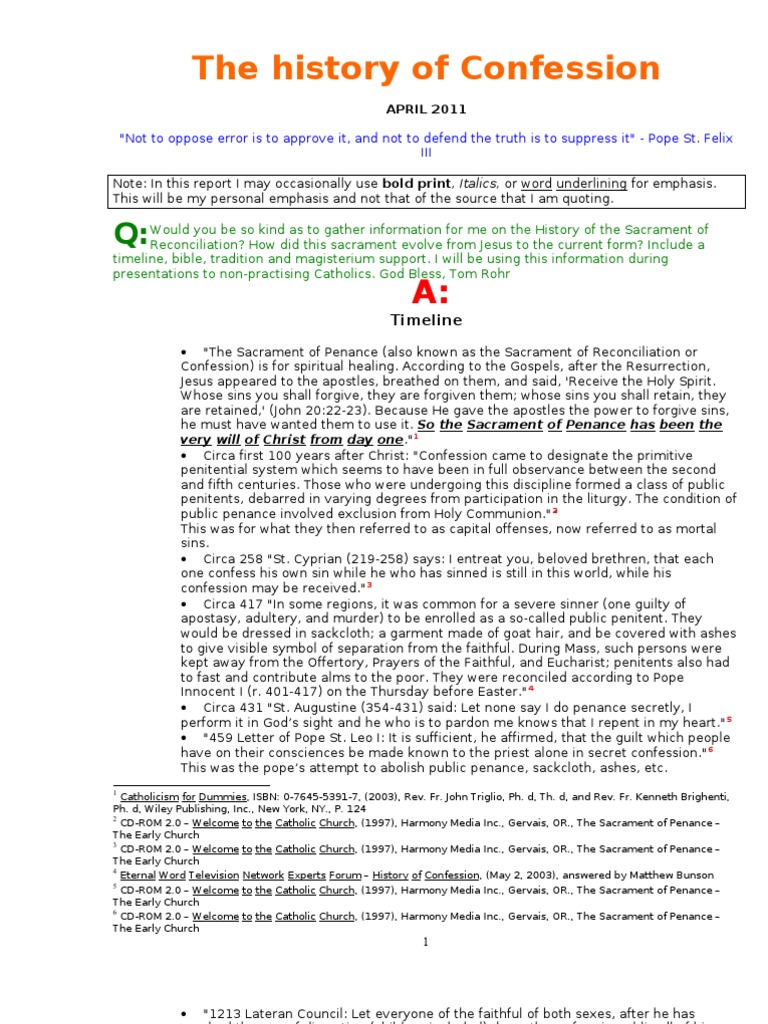Reconciliation, particularly within the Catholic Church, serves as a profound sacrament that transcends mere ritual. It embodies a transformative journey of the soul—a restorative process through which individuals confront their moral failings and seek communion with God. This sacrament, often referred to as Confession, holds a unique position in the realm of Christian practices, illuminating the intricacies of forgiveness and the depth of divine love.
To appreciate the significance of reconciliation, one must first understand the theological underpinnings that inform this sacred rite. In the Catholic tradition, sin is perceived not only as a personal failing but also as a breach in the relationship with God and the community of faith. Thus, reconciliation is not simply about confessing wrongdoings; it is a holistic endeavor aimed at restoring harmony with God and neighbor. The necessity of this reconciliation speaks to the very heart of human existence—the quest for forgiveness and the yearning for acceptance.
The sacrament of Reconciliation is deeply rooted in biblical theology. Jesus Christ, during His earthly ministry, exemplified the principles of forgiveness and redemption. Through parables such as the Prodigal Son and the forgiving heart of the Good Samaritan, He illustrated God’s boundless mercy. Importantly, after His resurrection, Christ conferred the authority to forgive sins upon the apostles, establishing a foundational rite for the early Church. The Catechism of the Catholic Church articulates that “the Church has received the mission of proclaiming the forgiveness of sins.” Thus, this sacrament emerges as vital to the Church’s identity and mission.
The process of reconciliation encompasses several poignant stages, each designed to facilitate a genuine encounter with God’s mercy. It begins with an examination of conscience, an introspective process where individuals reflect on their thoughts, words, and actions in the light of God’s commandments. This self-examination is not merely an exercise in guilt but an essential precursor to acknowledging one’s need for divine mercy. Herein lies the beauty of vulnerability; by confronting one’s shortcomings, the penitent opens themselves to the transformative power of grace.
Upon entering the confessional, the act of confession itself becomes a sacred dialogue. The confessor, acting in persona Christi (in the person of Christ), serves as a compassionate witness to the penitent’s transgressions. This confessional practice fosters a sense of accountability and community. It cultivates humility, as individuals traverse the delicate balance between brokenness and the hope of reconciliation. It is there that the enigmatic concept of contrition unfolds—an authentic sorrow for sins, coupled with a resolute intention to amend one’s life.
While the act of confession addresses the individual’s sins, it is the pronouncement of absolution that truly encapsulates the essence of Reconciliation. The priest, through the authority granted by Christ, communicates God’s forgiveness, allowing the penitent to experience the liberation that comes from being absolved of guilt. This moment is both profound and redemptive, as it reinstates the individual’s status within the Church and strengthens their bond with God. It symbolizes the transition from darkness to light, from despair to hope.
Beyond the formalities of sacramental confession, the implications of reconciliation extend into daily life. The act of seeking forgiveness should inspire a ripple effect, encouraging individuals to extend the grace they have received to others. This dynamic exchange is pivotal in fostering a culture of forgiveness within the community. When one experiences the magnitude of God’s mercy, a natural inclination arises to mirror that love in relationships with others. It challenges believers to break cycles of resentment and fosters an ethos of reconciliation in a world often marred by division and strife.
Furthermore, the sacrament of Reconciliation emphasizes the ongoing journey of conversion. It serves as a reminder that spiritual growth is not a linear path; rather, it encompasses a series of ups and downs, victories and failures. Regular participation in Confession provides believers with the tools to navigate this intricate journey, reinforcing their commitment to a life aligned with Gospel values. Engaging in this sacramental grace cultivates an inner resilience, fostering trust in God’s unwavering mercy and love.
However, it is essential to acknowledge that the sacrament of Reconciliation is often met with trepidation and misunderstanding. Many individuals grapple with feelings of shame or perceive the act of confession as an antiquated practice. Yet, it remains a vital means of spiritual nourishment—an opportunity for profound encounter with God. In embracing this sacrament, one discovers not only the depths of their own sinfulness but also the astonishing heights of divine compassion.
In conclusion, Reconciliation in the Catholic Church is far more than a ritualistic act. It is a radical invitation to experience God’s love in its most unadulterated form. It challenges believers to confront the complexities of sin, the beauty of forgiveness, and the transformative power of grace. As individuals engage with the sacrament of Confession, they embark on a continual journey—one that promises renewal, fosters community, and ultimately leads back to the heart of God. In this sacred space, the promise of reconciliation becomes a beacon of hope, igniting curiosity about the depths of divine love and the possibility of a life reconciled with itself and others.



